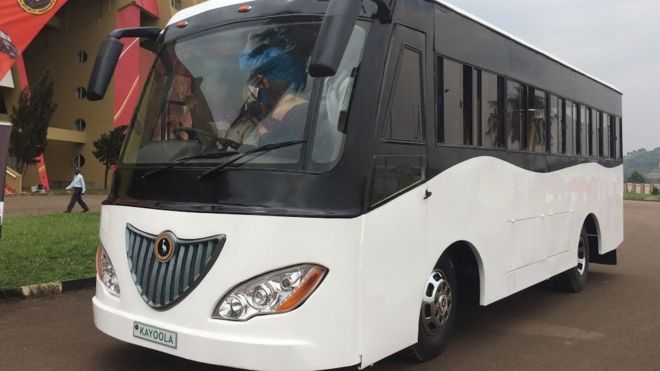
Like most people who love toys, I seem to have a penchant for cars. I don’t know whether this love comes for my father (bless his soul) being a poorly paid civil servant with a family of nine plus who never owned one himself. His closest claim to owning a mobile vehicle was a two wheeled scooter that left him scarred and scared. Alternatively this love could have been derived from the rides in my maternal grandfather, Eriasafu Kiguba’s quixotic rides. His particular choice was a British made model, the Austin Cambridge. He actually owned two of them over time plus two hunting rifles -one for big game and another for birds. But they say an apple does not fall far from the tree, so I will assume my father’s lack of one is the biggest driver of the desire to own toys. Just throw in a bit of the maternal thing and you have the whole picture.
It was with great pride and joy therefore that I, like many Ugandans (whose fathers never owned cars), welcomed the ‘invention’ of Uganda’s first car, the Kiira (sic). Hardly had the Kiira hit the waves and there was talk of a bus to boot – the Kayoola. (The guys who come up with these names are pretty creative.) Having home made vehicles is not only a macho thing, but we too could boast of owning Ugandan made versions of toys our families never had as we were growing up. Both these automotive are supposed to be electric powered and therefore green and efficient. The buzz in town is about ‘manufacturing 30,000 of them to ‘secure our future’.
However before I could fully celebrate this national milestone, my mind raced back to 1986 when the liberators of that time castigated the governments before them for even failing to make safety pins and importing furniture as if there were no carpenters in Nsambya! You the reader were probably too young to have felt the revolutionary zeal of the time. But we the recently graduated youth, could feel the awakening. Not only would we make safety pins, we were going to make machines that made machines. Why were we exporting our copper and iron ore without processing? The exhilaration was head swooning. We would drink from Tumpeco mugs and wear Nytil clothes. We would barter our coffee and cotton for medical supplies from Cuba and Laurels from Japan. We tried, that is until the IMF and World Bank arrived and snapped us out of our reverie.
Thirty five odd years later and we have not made our first safety pin from Ugandan steel. That could have been a tall order given the complications of galvanizing steel. However given the plentitude of wood (especially bamboo), we could have lowered our expectations to toothpicks – the finely honed and smooth ones young people used to walk around with in their mouths. I recall an incubator program at the Uganda Industrial Research Institute (UIRI) to make these toothpicks. I don’t know what happened but here we are now trying to make Kayoola buses!
Nothing wrong with that but trying to industrialize is not necessary a knowledge thing. Rather it is about a culture that enables a society to use machines to produce on a mass scale. It is about a values system that enables an organized group to systematize and simplify work processes, and the replacement of uncertain supply with controllable diverse sources to drive costs down. It is a cumulative cultural process which requires mindset and paradigm shifts to understand the implications of specialization and division of labour to drive commercialization and economies of scale. These are not things that primitive societies with a ‘big chief’ mentality can transform to do overnight. In order to ‘manufacture’ usable Kayoolas, we have start again, with toothpicks, safety pins, bicycles and such other primary industrial products. Yes we can make Kayoolas, but intuitively, toothpicks come first.
Samuel Sejjaaka is Country Team Leader at Mat Abacus Business School. Twitter @samuelsejjaaka

